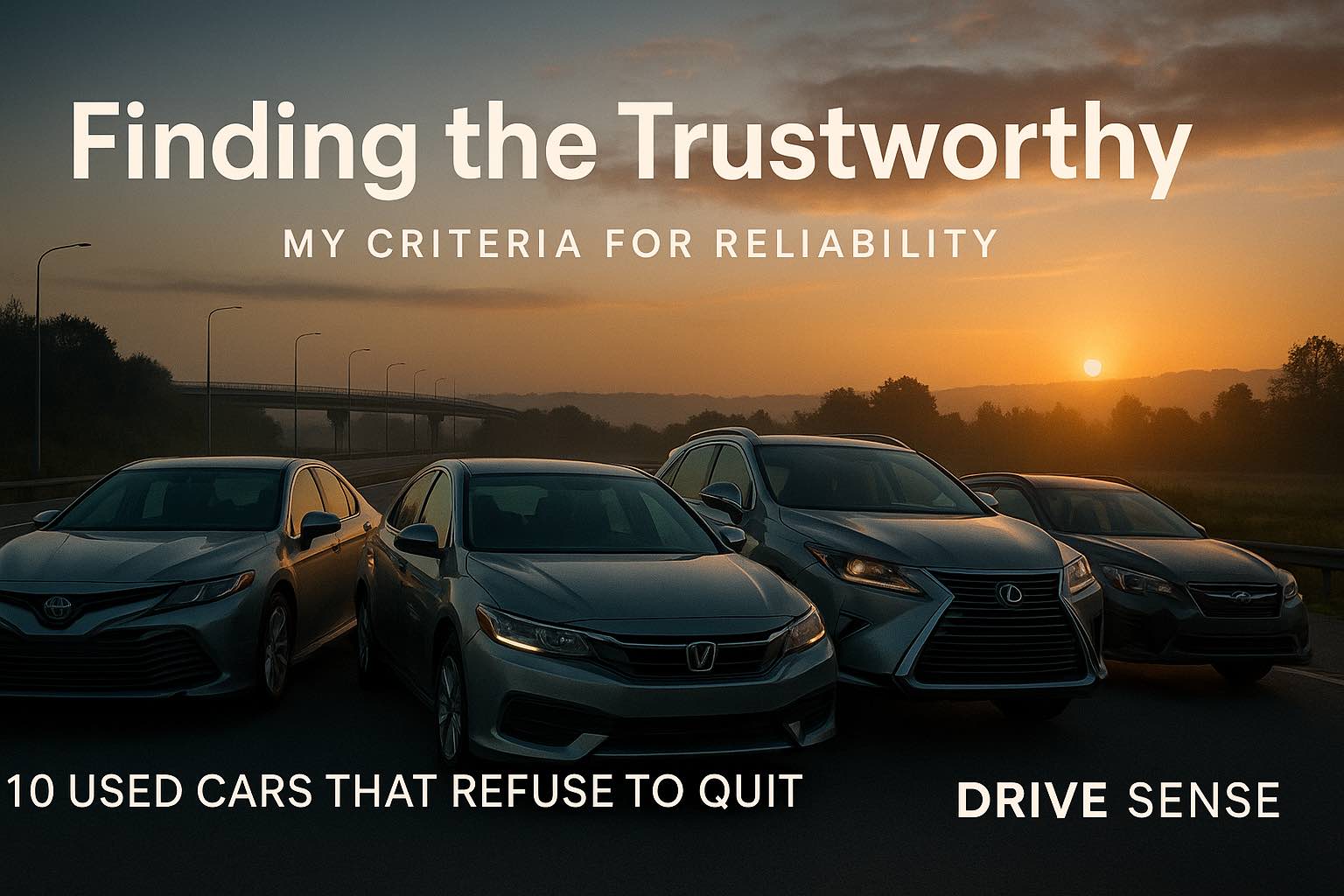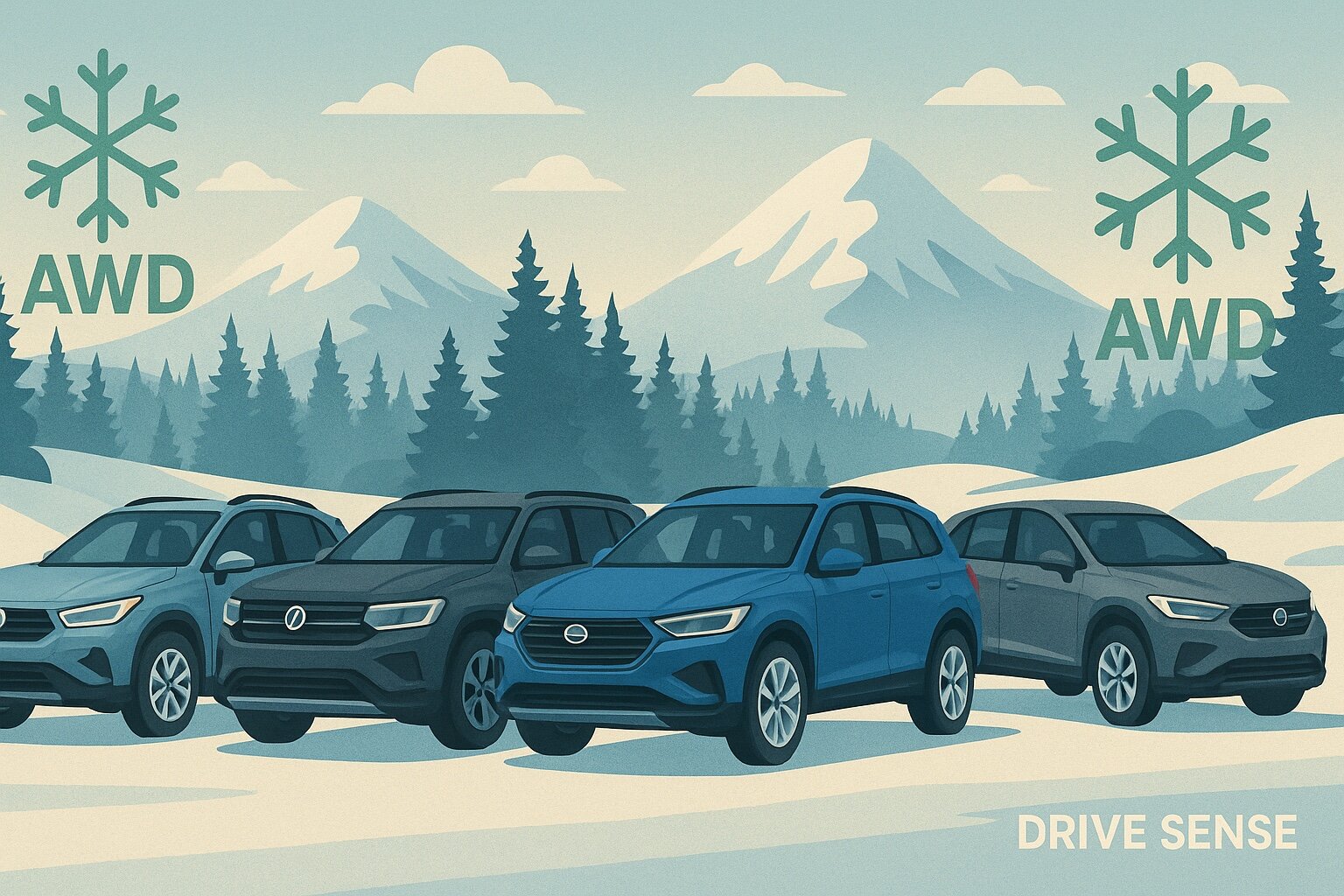Finding the Trustworthy: My Criteria for Reliability
Ask any seasoned New York commuter or a suburban parent shuttling kids to soccer practice—reliability isn’t just a bonus, it’s a necessity. In the world of used cars, dependability goes beyond a manufacturer’s reputation. It’s shaped by real-world durability, cost of ownership, accessible maintenance, and how well a model withstands both city potholes and long highway hauls. Drawing on industry data from J.D. Power, Consumer Reports, NHTSA records, and dealer feedback across the Northeast corridor, I’ve assembled a list of ten models that consistently outshine their peers when it comes to lasting value and peace of mind. For each, I’ll blend hard specs with firsthand impressions and practical context from U.S. roads.
The List: 10 Used Cars that Refuse to Quit
In no particular order—because reliability wears many badges—these are the vehicles that have earned their stripes in American driveways and on city blocks:
Toyota Camry (2012–2017): The Quiet Overachiever
It’s hard to overstate the Camry’s reputation for reliability. The 2012–2017 generation wears an unflashy suit but hides a powertrain that refuses to break stride. Both the 2.5-liter four-cylinder and the 3.5-liter V6 are widely regarded for their longevity. Toyota’s six-speed automatic is smooth and rarely falters. Inside, materials might not excite, but every button clicks with reassuring precision—a tactile reminder of Japanese engineering priorities.
On New York highways, road noise is modest—quieter than a comparable Chevy Malibu—and steering is light enough for parking lot ease but stable at speed. The hybrid variant is especially frugal, reliably returning over 40 mpg in mixed driving according to EPA estimates.
Common issues? Early models had minor infotainment quirks; otherwise, maintenance boils down to fluids and filters. The Camry isn’t thrilling to drive—no surprises there—but its predictability borders on comforting.
Honda Accord (2013–2017): Where Refinement Meets Stamina
The Accord is Toyota’s perennial rival for a reason. This generation brings sharper steering feel than the Camry and a cabin with more premium touches—think soft-touch dash and precise climate knobs that click with authority. Honda’s naturally aspirated 2.4-liter four-cylinder is as close as you get to bulletproof in modern motoring; the optional V6 adds punch without sacrificing reliability.
Civic-minded drivers will note slightly firmer ride quality than in the Camry, but it pays off in cornering confidence. CVT automatics here are more robust than rivals’, though I’d advise confirming fluid service history before buying used.
Lexus ES (2013–2018): Luxury That Lasts
The ES borrows heavily from the Camry platform but dresses it up with quieter insulation and supple leather seats—a fact you’ll appreciate during long commutes or weekend getaways upstate. The 3.5-liter V6 is exceedingly smooth; acceleration is effortless yet muted.
I’ve always been struck by how little wind noise seeps into the cabin at 70 mph—noticeably better than most Acura TLX models of similar vintage. Maintenance costs are higher than for mainstream sedans, but you’re repaid in serene reliability.
Toyota Corolla (2014–2019): Simple Done Right
If reliability had a mascot, it might be the Corolla. The 1.8-liter four-cylinder won’t win drag races—expect about 132 hp in most trims—but it will start every morning without complaint even after years of city grind. Fuel economy hovers around 32 mpg combined.
Cabin plastics are basic but hard-wearing; I’ve noticed barely any rattles even on cars pushing 100,000 miles. The ride is softer than most compacts—less jarring over Bronx potholes than a Ford Focus—and rear legroom is surprisingly generous for tall passengers.
Mazda3 (2014–2018): Fun Without Fuss
Mazda’s compact isn’t just reliable—it injects some verve into daily driving thanks to its precise steering and communicative chassis. The 2.0- or 2.5-liter Skyactiv engines have proven sturdy with proper oil changes; manual transmissions are especially robust, though automatics hold up well too.
Interior design feels sportier than most competitors (the Honda Civic included), with intuitive rotary controls and supportive seats. Road noise can be higher than in a Corolla—an area where Mazda lags behind Toyota—but if you care about steering feedback, this is your pick.
Honda CR-V (2015–2019): The Practicalist’s SUV
This compact SUV has earned its stripes among families seeking worry-free versatility. Honda’s 2.4-liter engine (prior to turbo introduction) stands out for durability; later turbocharged models have had some early teething issues, so I recommend sticking with naturally aspirated variants if absolute reliability is your goal.
Cargo space trumps rivals like the Nissan Rogue, and rear seats fold flat without drama—a small detail that makes Costco runs less stressful. Ride quality absorbs urban bumps well, though wind noise is slightly elevated at highway speeds compared to a RAV4.
Toyota RAV4 (2013–2018): Consistency on Four Wheels
The RAV4 remains one of America’s best-selling crossovers for a reason: it just works, year after year. This generation sports a naturally aspirated 2.5-liter four-cylinder with no significant weak points; transmissions shift unobtrusively, whether automatic or CVT.
Cabin build quality matches its price point—hard plastics abound—but everything feels bolted together tightly even after years of use. In my experience, front seats feel firmer than those in the CR-V but offer better side support during sharp turns.
Subaru Outback (2015–2019): Go-Anywhere Assurance
If your weekends involve ski trips or muddy trailheads upstate, Subaru’s Outback provides all-wheel-drive confidence and impressive ground clearance without sacrificing car-like comfort. The base 2.5-liter four-cylinder is reliable when maintained meticulously; earlier CVTs had some complaints but post-2015 units are generally trouble-free according to owner surveys.
Visibility from the driver’s seat is excellent—a trait that makes tight Brooklyn parking less nerve-wracking—and interior materials feel more upscale than those found in rival Ford Escapes or Hyundai Tucsons of this era.
Lexus RX (2013–2017): Where SUV Meets Serenity
The RX blends Lexus luxury with Toyota robustness—a formula few competitors have matched over time. Its 3.5-liter V6 delivers smooth power delivery while remaining one of the least problematic engines in its class. I’m always impressed by how quietly the RX glides over rough pavement; tire roar is minimal compared to an Audi Q5 or Mercedes GLE from the same period. If there’s a downside, it’s cost: repairs and parts are pricier than mainstream SUVs—but resale values stay strong year after year.
Toyota Prius (2015–2020): Hybrid With Staying Power
No list would be complete without Toyota’s hybrid juggernaut. The fourth-generation Prius boasts an updated battery pack (lithium-ion in many trims) and improved ride comfort over earlier iterations. Fuel economy routinely surpasses EPA estimates—I’ve seen over 50 mpg in mixed driving under NYC conditions—and real-world reports show original batteries regularly lasting beyond 150,000 miles. The drive itself? Not engaging by any stretch—the steering feels numb—but there’s satisfaction in watching each mile tick by with barely any fuel gauge movement. Hybrid system repairs can be costly if needed outside warranty coverage; however, frequency remains low according to repair data from sources like RepairPal and J.D. Power studies.
The Takeaway: What Sets These Models Apart?
Across all ten picks, patterns emerge: conservative engineering choices (naturally aspirated engines over turbocharged newcomers), proven transmission designs, and wide availability of affordable service parts all contribute to long-term ownership satisfaction. Notably absent from this list are German luxury brands—a reflection of higher repair costs and more frequent electronic gremlins as these vehicles age stateside.
Ultimately, used car reliability isn’t about flash or fleeting trends—it’s about consistent performance day after day under varied real-world conditions. If you’re shopping for peace of mind on American roads—or simply want your next car purchase to be as uneventful as possible—these ten models represent your best bets according to both statistics and countless personal encounters behind the wheel.

